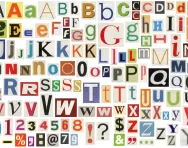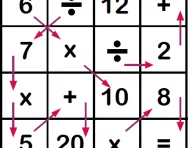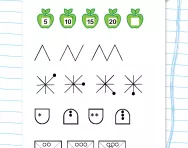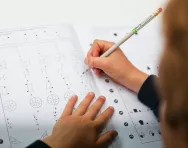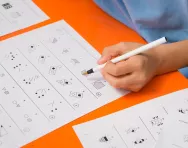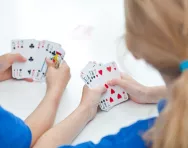TheSchoolRun.com closure date
As we informed you a few months ago, TheSchoolRun has had to make the difficult decision to close due to financial pressures and the company has now ceased trading. We had hoped to keep our content available through a partnership with another educational provider, but this provider has since withdrawn from the agreement.
As a result, we now have to permanently close TheSchoolRun.com. However, to give subscribers time to download any content they’d like to keep, we will keep the website open until 31st July 2025. After this date, the site will be taken down and there will be no further access to any resources. We strongly encourage you to download and save any resources you think you may want to use in the future.
In particular, we suggest downloading:
- Learning packs
- All the worksheets from the 11+ programme, if you are following this with your child
- Complete Learning Journey programmes (the packs below include all 40 worksheets for each programme)
You should already have received 16 primary school eBooks (worth £108.84) to download and keep. If you haven’t received these, please contact us at [email protected] before 31st July 2025, and we will send them to you.
We are very sorry that there is no way to continue offering access to resources and sincerely apologise for the inconvenience caused.
What is non-verbal reasoning?
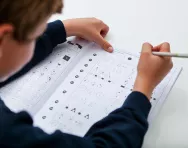
Non-verbal reasoning – sounds daunting!
‘Non-verbal reasoning is problem-solving based around pictures, diagrams and shapes, rather than words,’ explains Stephen McConkey of Eleven Plus Exam Papers. Unlike verbal reasoning, it’s not as reliant on the English language; rather, the questions use drawings, shapes or codes, and your child will need to work out sequences, similarities and differences between these figures or break the code.
Non-verbal reasoning tests are designed to see how your child can use critical thinking and logic to solve problems, and are an indication of their mathematical capabilities and powers of deduction. From this, the theory is that the examining body can get a picture of your child’s potential and intelligence, rather than their learned ability.
What sort of questions are involved?
The questions in a non-verbal reasoning test are based around mathematical concepts such symmetry, rotation, mirroring, shape, size and direction, and involve diagrams rather than words. Typical questions include:
- Spotting the odd shape out (e.g. a four-sided shape in a group of three-sided shapes)
- Working out what a shape would look like when folded
- Identifying the mirror image of a given shape
- Working out the next diagram in a sequence (for example a series of rectangles divided into squares, where the first has one square shaded, the second has two, the third has three, and so on)
- Finding two identical shapes in a series of five shapes
- Identifying what a shape would look like when rotated by 90 degrees
- Generally, each question has a series of three to five shapes.
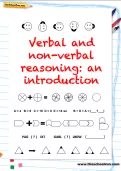
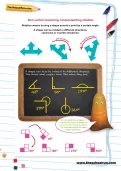
Prepare Your Child For The 11+ Exam
- Essential 11+ English and maths skills
- Verbal and non-verbal reasoning questions
- Reading comprehension worksheets
- CLOZE test worksheets
What skills and knowledge does my child need?
‘Non-verbal reasoning is really a test of your child’s maths skills,’ says Stephen. They need to have a good understanding of mathematical concepts such as symmetry, rotation, direction and shape. ‘It’s also important that they have a good grasp of the basic principles of maths,’ adds Stephen. ‘They need to be good – and quick – at addition and subtraction, know all their number bonds and times tables, and have good spatial awareness.’
Can non-verbal reasoning be hard to master?
‘Non-verbal reasoning requires good visual acuity (acuteness of vision combined with good interpretation by the brain), which is a skill that comes more naturally to some people than to others,’ says Stephen. Spatial awareness – understanding the relation of objects to each other, even when they change position – is also important. And if your child is the sort who struggles to tell their left from their right, non-verbal reasoning tests could prove tricky for them.
Nevertheless, non-verbal reasoning skills can be improved even if they’re not second nature to your child. The key is to be disciplined and systematic, and to look at each element in the sequence in turn, ruling out options as you go along.
Help your child practise non-verbal reasoning at home
‘A good mathematical knowledge is important for non-verbal reasoning tests, so encourage your child to work on learning number bonds and times tables by rote, and practising addition and subtraction,’ says Stephen. You can also boost non-verbal reasoning skills by:
- Playing games like spot the difference and Sudoku.
- Developing spatial awareness and understanding of how shapes interconnect with jigsaws and construction toys like Meccano and Lego.
- Using a pack of cards to practise addition and subtraction, for example by dealing out five cards and getting your child to add them all together, subtract the smallest number from the largest, and so on.
- Playing maths games when out and about, such as asking your child to add together all the numbers from the registration plate of the car in front.
- Drawing shapes on a piece of paper and getting your child to draw their mirror image, using a mirror to check the results, or cutting them out and folding them in half to see how they look.
- Using the computer: the ideal platform to practise non-verbal reasoning skills.
To help your child try their hand at non-verbal reasoning in preparation for the Year 7 CATs or the Eleven Plus our Verbal and non-verbal reasoning: an introduction learning pack offers practice questions and answers and hints on how to understand the tests.
TheSchoolRun's 11+ Learning Journey offers a complete, year-long preparation plan for the 11+ and includes 48 explanatory non-verbal reasoning worksheets.
You can also read about verbal reasoning tests and how they are used in the secondary school selection process.
Photo credit: YZphotography
